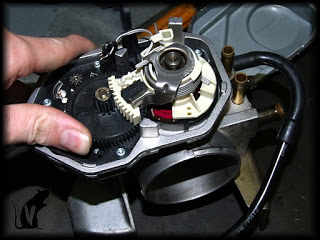Sensor Sensor In EFI Car Engine and Its Functions
Almost all the cars in circulation today are already using EFI or Electronic Fuel Injection system. The EFI system is a system where the fuel that enters the combustion chamber is controlled electronically. Basically this system has 3 main components ie sensor, ECU and actuator. Sensor has a function to detect the state of the machine ranging from gas throttle openings, engine temperature, vacuum on the intake manifold and so forth. The data from the sensor is then processed by the ECU and then forwarded to the actuator. In the fuel system, the actuator is an injector that serves to spray fuel into the combustion chamber. So the amount of sprayed fuel is regulated by the ECU based on information from sensor sensors on the EFI machine itself. Well then what kind of sensor and what kind? Here's the full explanation.
1. Water Flow Meter Sensor
This sensor has the function of detecting the airflow (volume) that goes into the intake manifold. Air flow meter in the form of potassium which is complete with spring return and measuring plate. The size of the incoming air will affect the rotation of the potentiometer. Because the potentiometer is rotating then the output voltage of the potentiometer also changes. Well the magnitude of this potentiometer voltage received ECU as a signal.
2. Manifold Absolute Pressure Sensor
In addition to using air flow meters, incoming air volume can also be calculated with the MAP sensor. This sensor calculates the vacuum or pressure on the intake manifold. The magnitude of the vacuum on the intake manifold is converted to a resistance value on the MAP Sensor.
3. Throttle Position Sensor
TPS mounted on the throttle body. This sensor detects the amount of throttle openings in the form of a resistance value. Just like the air flow meter, TPS also uses potentiometers. The way it works is the same, when the throttle rotates, the potentiometer also rotates and the value of the resistance also changes. Because the value of the resistance changes, the voltage sent to the ECU also changes. The voltage value is accepted by the ECU as a signal.
4. Water Temperature Sensor
Basically the sensor on the EFI car engine using a variable resistor or resistor whose value can change the prisoner. In addition to the potentiometer, the variable resistor used for other sensors is the thermistor. These resistors change their value depending on the temperature. Thermistor used in water temperature sensor or WTS to know sushu cooling water. The cooler water temperature, then the fuel is sprayed more and more.
5. Water Intake Temperature
Sensor As the name suggests, IATS serves to determine the temperature of air entering through the intake manifold. This sensor is also a thermistor. The cooler the air temperature, the fuel is sprayed through the injectors more and more.
6. Crankshaft position sensor
This sensor serves to detect engine rotation and determine ignition timing. Its function is similar to a pulser on a motorcycle. In some cars, this sensor is placed near the noken so named Camshaft Position Sensor.
7. Oxygen Sensor
Oxygen sensor is located in the exhaust manifold to detect exhaust emissions. This sensor serves to evaluate whether the fuel mixture is correct or not.
That's some sensors on the efi car engine. So the sensor sensor concept is to use variable resistor where there is input voltage and output voltage. The output voltage will change depending on the resistance value of the sensor. The voltage is then captured by the ECU as a signal for later calculations to determine the amount of fuel that is sprayed into the combustion chamber. sewa elf di cirebon







